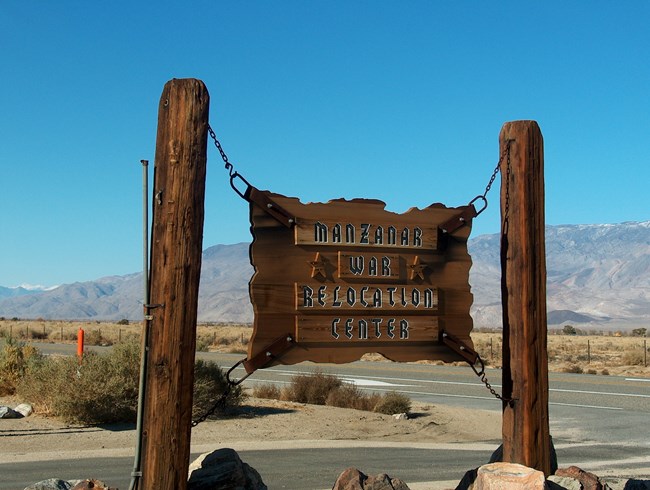
NPS Photo
Manzanar National Historic Site is one of 10 sites where the U.S. Government incarcerated Americans of Japanese ancestry during World War II. This park is also rich in layers of human history tracing back to early Native Americans.
Manzanar is the smallest park unit within the Mojave Desert Network, having approximately 813 acres of land and no consistent sources of surface water. It is located in the northwestern edge of the Mojave Desert—a high desert environment with extreme temperatures, high winds, and severe dust storms. Although established as a cultural historic site, Manzanar has areas of natural landscape that are monitored by the network.
The Mojave Desert Network provides natural resource inventory and monitoring information to help parks make effective, science-based management decisions. Inventories have been completed for mammals, birds, vascular plants, and reptiles & amphibians (see species lists further down the page). Maps and reports detailing Manzanar's vegetation, soils, and geology resources are also complete.
Monitoring at Manzanar National Historic Site
Ongoing Monitoring Efforts
Integrated Uplands vegetation and soils monitoring of the sagebrush, saltbrush, and rabbitbrush community
Invasive & Exotic Plants monitoring plan for detecting invasive plants throughout the Park
Reports & Publications
Inventories & Assessments present baseline data collected during the first phase of the development of the Mojave Desert Inventory & Monitoring Network in order to have comparison with the long-term monitoring data currently being collected. Monitoring protocols describe why and how we collect, manage, analyze, and report monitoring data about the network's Vital Signs. The protocols consist of a narrative and associated set of standard operating procedures (SOPs). Monitoring Reports summarize data and findings from our Vital Signs monitoring activities.
Source: NPS DataStore Collection 4376 (results presented are a subset). To search for additional information, visit the NPS DataStore.
Source: NPS DataStore Collection 4378 (results presented are a subset). To search for additional information, visit the NPS DataStore.
Source: NPS DataStore Collection 4380 (results presented are a subset). To search for additional information, visit the NPS DataStore.
Source: NPS DataStore Collection 4379 (results presented are a subset). To search for additional information, visit the NPS DataStore.
Select a Park:
Select a Species Category (optional):
Visit NPSpecies for more comprehensive information and advanced search capability. Have a suggestion or comment on this list? Let us know.
Last updated: January 26, 2023
